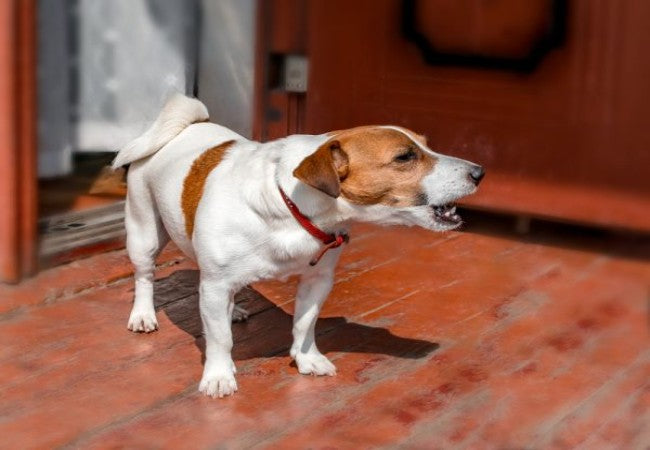DIY Puppy Obedience Training 2025: Vet Reviewed Step by Step Guide for Confident Starts 🐶

In this article
DIY Puppy Obedience Training 2025: Vet Reviewed Step by Step Guide for Confident Starts 🐶
By Dr. Duncan Houston BVSc
Welcoming a puppy means one of your first big jobs: training. Start building a strong foundation right at home using positive reinforcement, short sessions, and real‑world practice. This guide—crafted with vet precision—walks you through crate training, leash skills, core commands, potty cues, bite inhibition, and socialization. Along the way, access expert support via Ask A Vet,
1. 🕒 When To Begin Training
Start training the moment your puppy comes home—typically around 8 weeks old. The 6–16 week period offers peak learning —ideal for cues like sit, stay, and come.
Key Points: Puppies absorb through interaction, environment, and guided learning—so make every moment count.
2. 🧠 Positive Reinforcement & Timing
Positive training—rewarding desired behaviors—is the only method backed by science. Games, treats, and praise foster trust and motivation. Avoid harsh corrections, which may trigger fear or confusion.
Practical Tips: Use high-value treats from Woopf for key milestones; mark success with a click or word; keep sessions to 10–15 minutes, 2–3 times a day.
3. 🏠 Crate Training Foundations
- Select a properly sized crate—a snug but comfy den.
- Introduce gradually: let your puppy explore with the door open, offer treats to settle inside.
- Practice closing the door for short bursts—start with 1–2 minutes, and slowly extend.
- Use a crate during naps or meal times to build positive association, curb separation stress, and reinforce potty training.
4. 🚽 Potty & Leash Prep
Potty Training:
- Go out first thing, post-meal, post-play, bedtime.
- Stand quietly for ~5 minutes—reward immediately after success.
- Track patterns and use Ask A Vet to refine timing if accidents persist.
Leash Familiarity:
- Attach indoors: let puppy sniff and walk around with a lightweight leash and harness.
- Practice “follow me” games—reward staying close.
- Move to a quiet yard, guiding short laps, praising calm focus.
5. 🎯 Basic Commands: SIT, STAY, COME & MORE
Start reinforcing key cues with visual/verbal markers and rewards:
- SIT: Raise hand up, say “sit”; reward as puppy sits.
- STAY: Cue sit/down, palm out; take 1 step back—reward if steady.
- COME: Extend arm and sweep to shoulder; reward warmly on arrival.
Keep sessions short, consistent, and gradually add distractions and locations to generalize learning.
6. 🦷 Addressing Biting & Nipping
- Use an “ouch!” cue when bitten, withdraw attention, then offer an appropriate chew object.
- Slowly teach bite inhibition and self-control with repetition.
7. 🗣 Socialization & Environment Proofing
- Exposure to varied environments, textures, and sounds post-vaccine—quiet park, gentle crowd—while offering treats.
- Practice commands during real-world distractions to deepen reliability.
8. 📚 Training Plan & Milestones
| Age/Week | Focus | Milestone |
|---|---|---|
| 8 wks | Crate, leash indoors, potty routine | Settled in crate & no leash stress |
| 10 wks | Sit & come cues | Reliable sit & come at 1m |
| 12 wks | Down & stay, leash outside | Stay for 5s, calm walks |
| 16 wks | Generalization | Response in new locations |
9. 🛠 Troubleshooting Tips
- Losing attention? Switch up rewards—mix treats with Woopf puzzle play.
- Regression? Shorten sessions, simplify distractions.
- Potty issues? Share logs with Ask A Vet for tailored advice.
- Biting returning? Offer chill chew toys and consistent redirection.
10. 🔎 When to Reach Out
- Persistent fear, anxiety, or aggression
- Stress refusing the crate or elimination cues
- Slow progress after 6–8 weeks of consistent training
In such cases, consult Ask A Vet or a certified positive-reinforcement trainer to develop advanced strategies or behavior plans.
11. 🧠 Why This Works
- Maximizes early developmental windows
- Builds confidence through clear structure and rewards
- Strengthens bond via predictability and trust
12. ✅ Final Takeaways
- Begin right away: 8 weeks with short daily sessions
- Use positive reinforcement and consistency
- Focus on crate, potty, leash, basic cues, and socialization
- Support with vet guidance and enriched tools
- Stay patient—your pup is learning life skills 🐾






